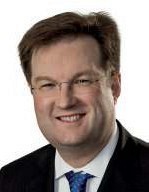The Big Question
This month’s question is: ‘Have you worshipped in a Church of Scotland outside Scotland?’

The Rev Gary Caldwell, minister at Dunblane: St Blane’s l/w Lecropt
“A number of years ago I had the wonderful opportunity and privilege to visit Jerusalem.
“I discovered a place that was way more complicated, divided and messy than I ever imagined or had been told about.
“Just outside the city walls, on a hill overlooking the city sits the Scots guest house, where we stayed.
“The guest house is a beautifully simple and welcoming place and we worshipped in the St Andrew’s Church of Scotland on the Sunday.
“Walking into the church I was struck by the familiarity of the place.
“From the purple hymn books to the worship style, it was all very familiar.
“It was all a bit surreal being surrounded by such familiarity with a very different context outside.
“What stood out for me though was the amazingly beautiful cross which seemed to hover above the communion table.
“A cross, on a hill, outside a city wall, a city full of complication, division and human mess.
“I was deeply moved, as I had been several times on the pilgrimage, as I thought again about my Lord Jesus dying on a cross, on a hill outside that city wall to atone for human complication, division, mess and sin.
“A hugely significant symbol in the midst of the familiarity of a Church of Scotland sitting on a hill outside a complicated situation.”

The Rev Edward Andrews, retired minister living in Nairn.
“I had long looked forward to visiting the Church of Scotland Church on Venti Settembre Rome. So, when my wife and I were in Rome one Sunday we managed to visit and worship there.
“The Church itself is an interesting building. It is set back from the road, and behind an impressive courtyard the Church itself is on the bottom floor of what first of all looks like a four-storey office block. On entering the sanctuary, you immediately are struck by the curious juxtaposition between the familiar and the exotic. “Architecturally, the Church does not differ from the basic plan of many Church of Scotland buildings, however that is where the familiar ends, for this is a truly international community.
“On the Sunday my wife and I were there, the members on welcoming duty were Scottish, but, as it was explained to us most of the people there were from different countries and different ethnicities.
“Over the years the membership had changed radically from originally being people with a Scottish background to being truly international, with different nationalities and ethnicities joined in worship. One felt very much involved in something different, a community of faith.
“After the service a trip up in the lift to the roof gave wonderful views over the City and real fellowship with travellers from all over the world at a light lunch.
“It was a moving and uplifting experience.”

The Rev Matthew Ross, Programme Executive – Diakonia and Capacity Building, World Council of Churches
“I have been privileged to visit most of the Church of Scotland congregations outwith Scotland and have preached in many.
“I am now a member in Geneva. Each congregation is very different and is affected by the local context. Some (such as Amsterdam) have amongst the largest attendance in the whole of the Church of Scotland.
“It is a mistake to view them as Scottish expat clubs. Each is very multinational – often with a significant percentage of recent migrants from Africa and Asia. Reformed English-speaking worship and Christian fellowship are what attracts.
“The average age of worshippers tends to be younger than in most Scottish congregations, raising questions as to what can be learned. Membership is often very transient, as people in short-term job appointments move on.
“The sheer diversity of members – from highly-skilled professionals working in international organisations to migrants arriving destitute – requires particular types of pastoral care. Pastoral issues can vary enormously, such as homesickness, poverty, concern for dependent family members, unfamiliarity with local practices and, most recently, uncertainties over Brexit. Some congregations are in dual membership of the Church of Scotland and the local Reformed Church (such St Andrew’s Church in Brussels also being part of the United Protestant Church of Belgium).
“On the wider ecumenical level, this is good for inter-church relations and can lead to practical co-operation between denominations.”

Lorna Paterson, former General Secretary of the Church of Scotland Guild, and member of St Columba, Ayr
“I’ve worshipped in various congregations. Some are Scots Kirks in Europe, in the International Presbytery, like Gibraltar, Paris, Lausanne and Rome; others are further afield like St Andrew’s Church, Jerusalem, Memphis and Tulsa in the USA, and Montreal in Canada.
“In each, worship was similar to here at home because they were staffed by Presbyterian ministers. The main difference was the international mix of the congregations wishing to participate in Presbyterian worship.
“Other places, like Kenya, where my husband was minister of St Andrew’s Nairobi, were different. In Nairobi, the church was packed for two morning services, conducted in English with an Afro-European choir singing praise and anthems. Congregational dress was in bright colours.
“At Chogoria near the foothills of Mt Kenya, the service was conducted in Swahili. My husband spoke in English – his sermon being translated by an interpreter, phrase by phrase. Another interpreter sat beside me translating everything for me.
The service lasted over three hours. People came and went throughout. Representatives of neighbouring congregations brought greetings, sometimes at length!
“In Zambia, some rural sanctuaries were basic, pews replaced by a length of wood supported by logs at either end – not the most comfortable seat for what was often a service lasting several hours but they were packed.
“In all these worship centres, we felt at home for, apart from length, much was familiar. The congregation moved in rhythm to the singing, with happy smiling faces. Unforgettable!”

The Rev Martin Fair, minister, Arbroath: St Andrew’s Church
“It’s a tough assignment but somebody has to go!’
“At least that’s what I said to my fellow trainee-ministers as I prepared to jet off to be the probationer minister at Christ Church, Warwick, the Church of Scotland congregation on the stunningly beautiful island of Bermuda. And yes, there was lots of sun, sea and sand on the days off , but Sunday mornings worshipping with the part ex-pat, part Bermudian congregation were what made it for me.
“Christ Church is reputed to be the oldest Presbyterian church in the Western Hemisphere and there’s no doubting that the sanctuary speaks of a rich history.
The renowned preacher, George Whitfield, spoke there on several occasions in the early 18th century and the pulpit from that time remains there to this day. “But for me, it was the worship of the present-day congregation that mattered more. The church was never less than well-filled with a traditional service at 8am and a family-orientated service at 11am. I can well remember certain Sundays when latecomers had to stand – even in the outer porch – such was the demand for pew-space!
“The worship featured organ-led praise with well-rehearsed choir items but the sermon was absolutely central to the flow of the worship.
“The minister at that time, the late Fred Marshall, was an excellent preacher – his sermons never less than theologically stimulating and wonderfully illustrated.
“What better church in which to ‘learn the ropes.’ For me, it was formative and very happy days.”